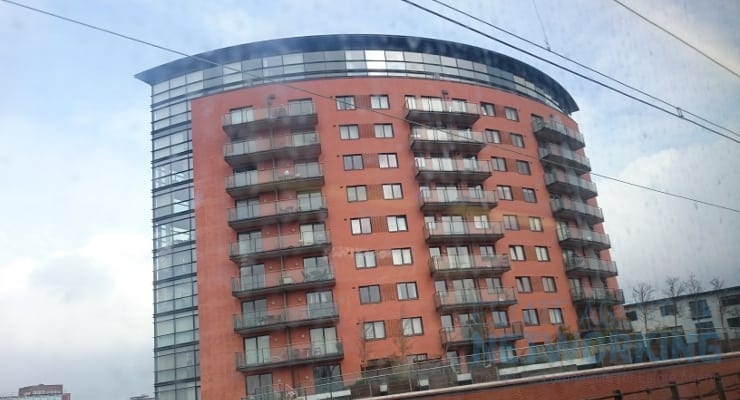Social housing levels failing those most in need – worst areas revealed
The latest research by innovative lettings platform, Bunk, has found that the private rental sector is picking up the slack for the millions of people reliant on social housing in England, due to an inadequate level being delivered from the social sector.
The research shows that the number of households on local authority waiting lists for housing remains above one million. Having increased steadily since 2002, the number of people in need of help peaked after the financial crisis and has shown a slight decline since 2012, however, in 2018, 1,114,477 people remained on council waiting lists. This is still greater than the number registered in 2002 and demonstrates the consistent need for more social housing.
But despite this, the total number of homes reaching the social rental sector has barely grown by just 0.07% since 2013. What’s more, the number of homes being rented in the social sector via local authorities has actually dropped by -5.29% since 2013 as councils offloaded the responsibility to private enterprises.
While the number of homes rented from private registered providers has increased as a result, the number of other public sector dwellings has also declined and the combined level has remained almost static despite huge waiting lists for housing on a year on year basis.
During the same time period, the number of private rental properties has increased by 7.7% as the buy-to-let sector has taken up the slack of the social sector’s failings.
The worst?
While the total number of properties reaching the social rental sector has remained static overall, there are swathes of the country where stock levels have dropped since 2013, some dramatically.
The worst is County Durham, where social housing stock has declined by -83.4% in the last six years. The London Borough of Redbridge is home to the second-biggest decline and the largest in London, down -37.9%. Forest Heath (-24.7%) and Wokingham (-24.4%) have also seen a decline of nearly -25%.
Cheshire East (-18.3%), North Warwickshire (-17.7%), the City of London (-14.1%), Wiltshire (-12.1%), Telford and Wrekin (-11.3%) and Windsor and Maidenhead (-10.1%) are also amongst some of the worst in England for a decline in social housing stock levels.
Co-founder of Bunk, Tom Woollard, commented:
“We tend to focus on the lack of affordable housing being built within the property market as a whole but what is also abundantly clear is that there is a dire shortage of homes being delivered to those that arguably need them the most.
While the overall number of social housing reaching the rental sector has remained largely static since 2013, we’ve not only seen a decrease over the last year but a maintained need for it with over one million people currently on waiting lists.
Local authorities have kept this issue at arm’s length by offloading the responsibility to private enterprise, with notable growth in private rentals also helping to pick up the slack. However, if the Government maintains its attack on the buy-to-let sector, an exodus of landlords will not only spell trouble for private rental tenants but the social sector as well.”
|
Social housing sector
|
|||
|
Year
|
TOTAL SOCIAL HOUSING*
|
Annual Change (%)
|
Total Change (2013-2018)
|
|
2013
|
4,084,002
|
↓
|
0.07%
|
|
2014
|
4,075,001
|
-0.2%
|
|
|
2015
|
4,085,000
|
0.2%
|
|
|
2016
|
4,099,001
|
0.3%
|
|
|
2017
|
4,100,002
|
0.0%
|
|
|
2018
|
4,087,001
|
-0.3%
|
|
|
*Total social housing comprises of properties rented from local authorities, rented from private registered providers and rented from other public sector dwellings as shown seperately in the tables below.
|
|||
|
Year
|
Rented from Local Authorities
|
Annual Change (%)
|
Total Change (2013-2018)
|
|
2013
|
1,681,001
|
↓
|
-5.3%
|
|
2014
|
1,668,001
|
-0.8%
|
|
|
2015
|
1,643,000
|
-1.5%
|
|
|
2016
|
1,612,000
|
-1.9%
|
|
|
2017
|
1,601,001
|
-0.7%
|
|
|
2018
|
1,592,000
|
-0.6%
|
|
|
Year
|
Rented from private registered providers
|
Annual Change (%)
|
Total Change (2013-2018)
|
|
2013
|
2,330,001
|
↓
|
5.2%
|
|
2014
|
2,343,000
|
0.6%
|
|
|
2015
|
2,387,000
|
1.9%
|
|
|
2016
|
2,430,000
|
1.8%
|
|
|
2017
|
2,443,001
|
0.5%
|
|
|
2018
|
2,452,000
|
0.4%
|
|
|
Year
|
Other public sector dwellings
|
Annual Change (%)
|
Total Change (2013-2018)
|
|
2013
|
73,000
|
↓
|
-41.1%
|
|
2014
|
64,000
|
-12.3%
|
|
|
2015
|
55,000
|
-14.1%
|
|
|
2016
|
57,000
|
3.6%
|
|
|
2017
|
56,000
|
-1.8%
|
|
|
2018
|
43,000
|
-23.2%
|
|
|
Private rental sector
|
|||
|
Year
|
Private Rentals
|
Annual Change (%)
|
Total Change (2013-2018)
|
|
2013
|
4,464,001
|
↓
|
7.7%
|
|
2014
|
4,622,001
|
3.54%
|
|
|
2015
|
4,773,000
|
3.27%
|
|
|
2016
|
4,832,000
|
1.24%
|
|
|
2017
|
4,797,001
|
-0.72%
|
|
|
2018
|
4,807,001
|
0.21%
|
|
|
Rankings – Worst performing areas based on social housing stock change growth (2013 to 2018)
|
|||
|
Location
|
Total Change (2013-2018)
|
||
|
County Durham
|
-83.4%
|
||
|
Redbridge
|
-37.9%
|
||
|
Forest Heath
|
-24.7%
|
||
|
Wokingham
|
-24.4%
|
||
|
Cheshire East
|
-18.3%
|
||
|
North Warwickshire
|
-17.7%
|
||
|
City of London
|
-14.1%
|
||
|
Wiltshire
|
-12.1%
|
||
|
Telford and Wrekin
|
-11.3%
|
||
|
Windsor and Maidenhead
|
-10.1%
|
||









